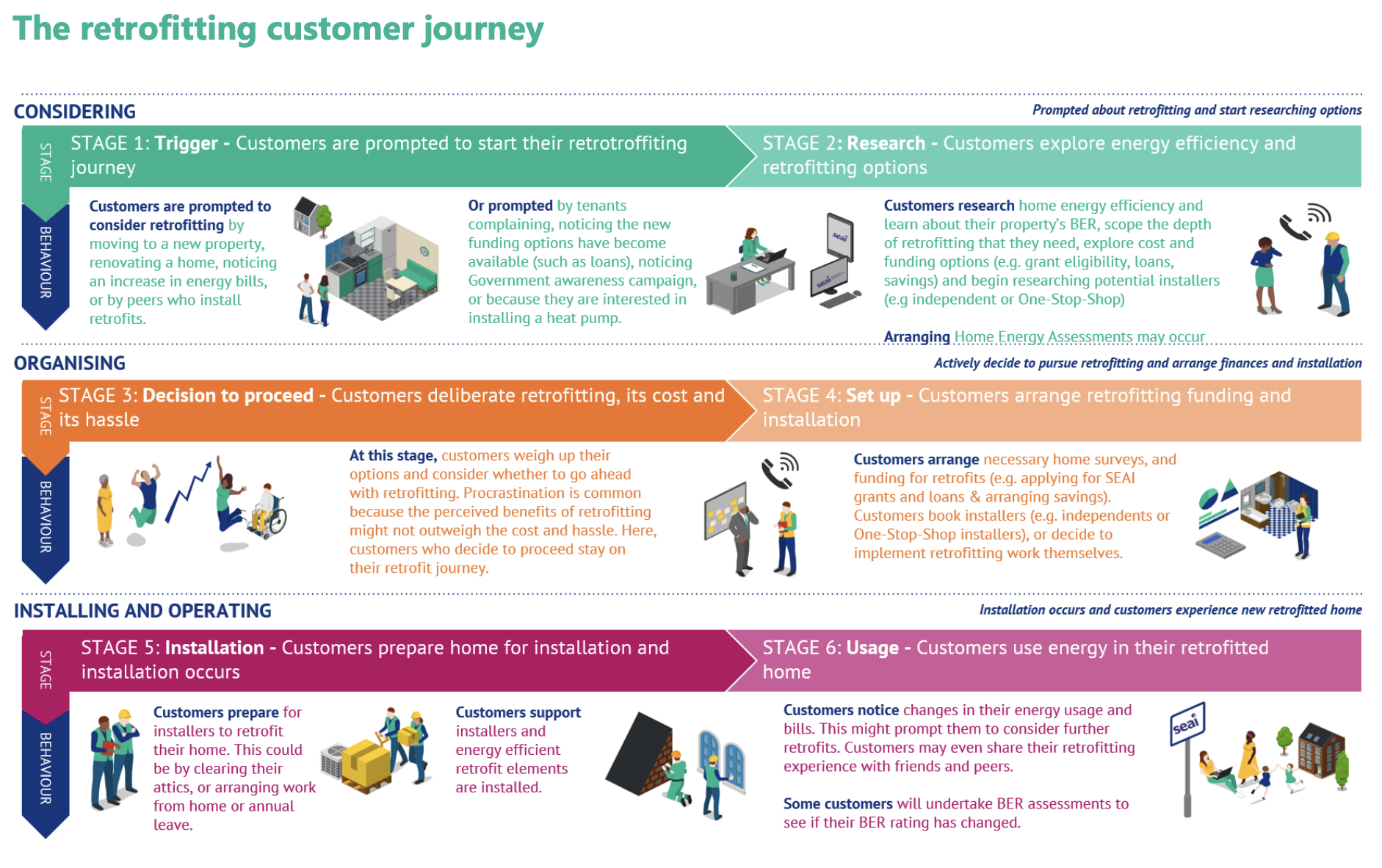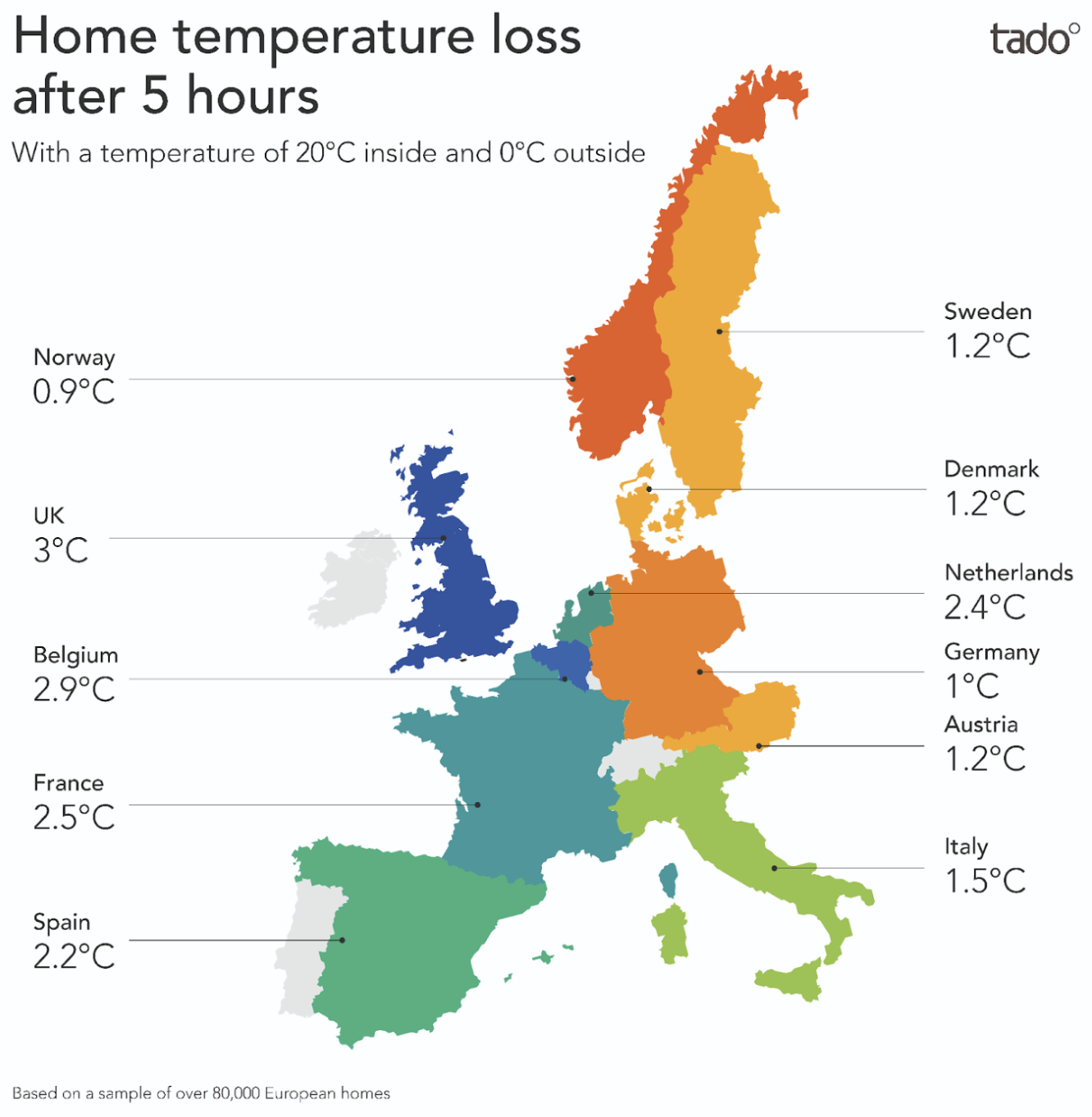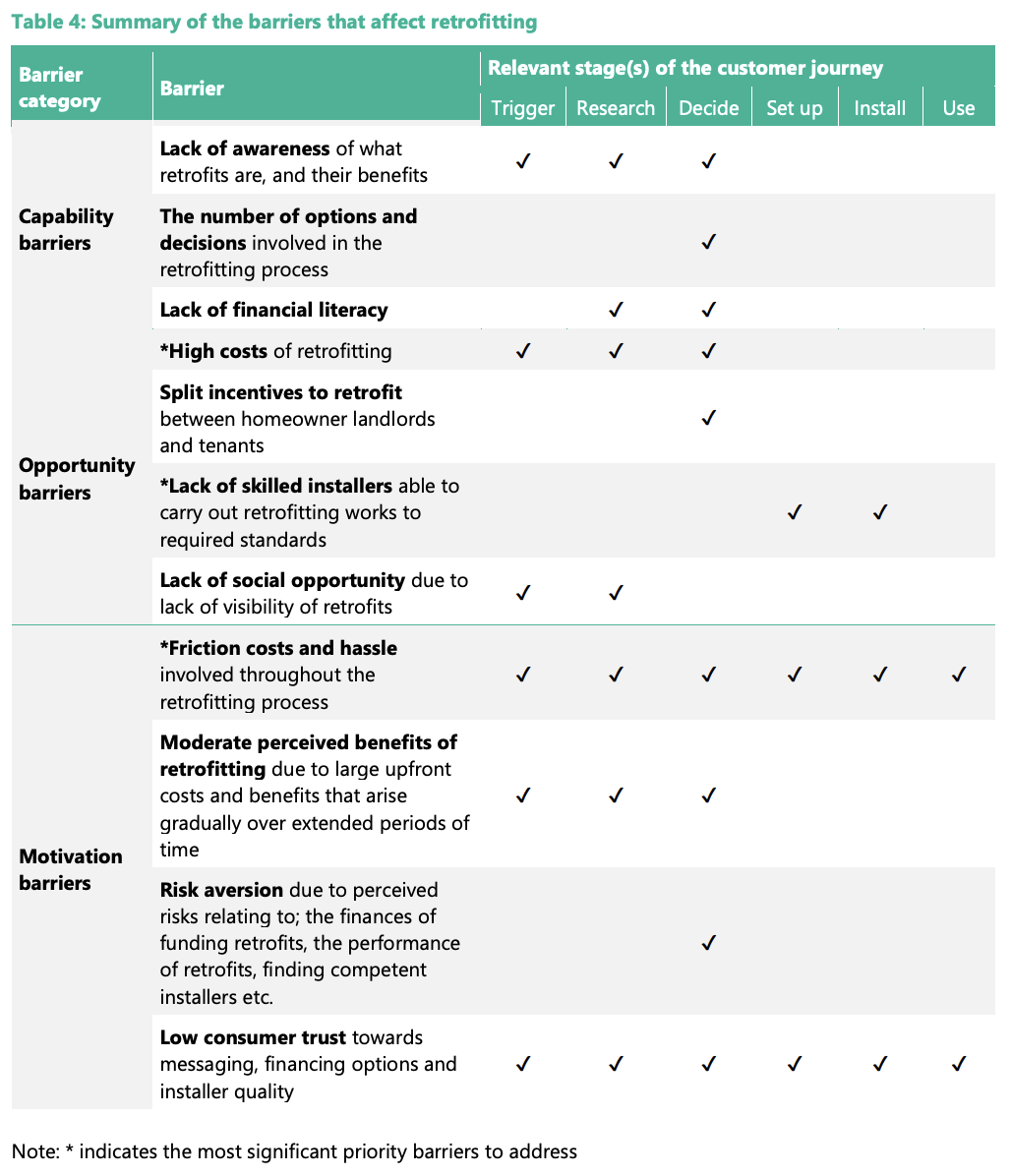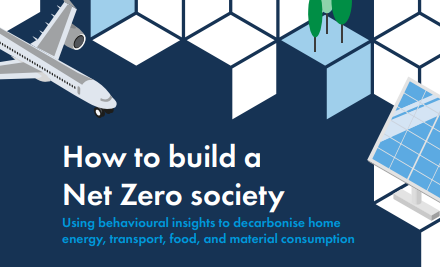After a winter marked by the biggest energy crisis since the 1970s, the costs of heating homes bites more than ever. This is particularly the case in countries like the UK, where a large share of the housing stock is old and poorly insulated. For example, one study from Tado found that UK homes lose heat up to three times as fast compared with neighbouring Western European nations (see Figure 1 below). To address this, the UK government has announced £1bn of funding to better insulate homes from April 2023, in a bid to ease the cost of living crisis and reduce carbon emissions at the same time.
Figure 1. Comparison of home temperature loss (Source: Tado)
The adoption of home retrofits (e.g. wall, floor, loft insulation) is also a behavioural challenge that we explored with the Sustainable Energy Authority of Ireland (SEAI). We conducted an evidence review, to map out the customer journey, key barriers and potential solutions along the way.
How do customers get retrofits?
We developed a retrofitting customer journey, outlining the common steps, decision points and frictions that affect homeowners looking to retrofit their homes in Ireland (and beyond). Customers need a trigger to start considering retrofits, before they research them. If they decide to proceed, they move on to the next step, installation and usage, and each of these stages comes with distinct behavioural challenges and touchpoints for interventions.
Figure 2. The retrofitting customer journey 
What stops customers from getting retrofits?
Throughout the retrofitting customer journey, customers encounter a multitude of barriers that affect their capability, opportunity and motivation to get a home retrofit. The high costs of retrofits, as well as high friction and hassle of arranging their installation, together with a lack of skilled and trusted installers are among the most significant barriers faced by customers.
Figure 3. Summary of the barriers that affect retrofitting
What works to encourage retrofit uptake?
Drawing on insights from our evidence review and the field of behavioural science, and in close collaboration with SEAI, we generated a longlist of solution ideas for Ireland. Here we look at some of the top solutions for Ireland and beyond:
Make it easy:
- Further improving the One Stop Shop (OSS) Scheme for Retrofits. The Irish OSS model can be an inspiration to other countries, which could also be applied to encourage the adoption of other green technologies (think heat pumps, solar panels, battery storage…) and might even be a service provided by businesses, rather than just the government.
- Addressing installer shortages, for instance by linking apprenticeships to the retrofit OSS thereby strengthening pathways from training to practice, or by mandating retrofit training to be included in standard curriculum of training and education courses in the construction sector.
Make it attractive:
- Auditing the existing loan/grant landscape, to explore a range of green financing solutions that help customers front the high costs of retrofits (e.g. offering green extensions to mortgages and/or low interest green loans).
Make it social:
- Normalise retrofit adoption by making them more visible, for instance by introducing standardised, recognisable signage to indicate when properties are being retrofitted, displaying salient labels on property listings and hosting open home events, such as Nesta’s heat pump show homes project.
Make it timely:
- Harness the potential of EPC certificates (BER in Ireland), that could directly steer customers to retrofits that are best suited for their situation and circumstances.
If you’re interested in exploring ways to increase retrofitting and are looking for an organisation to partner with to help you along this journey, BIT would love to hear from you.
The full report is available here.









